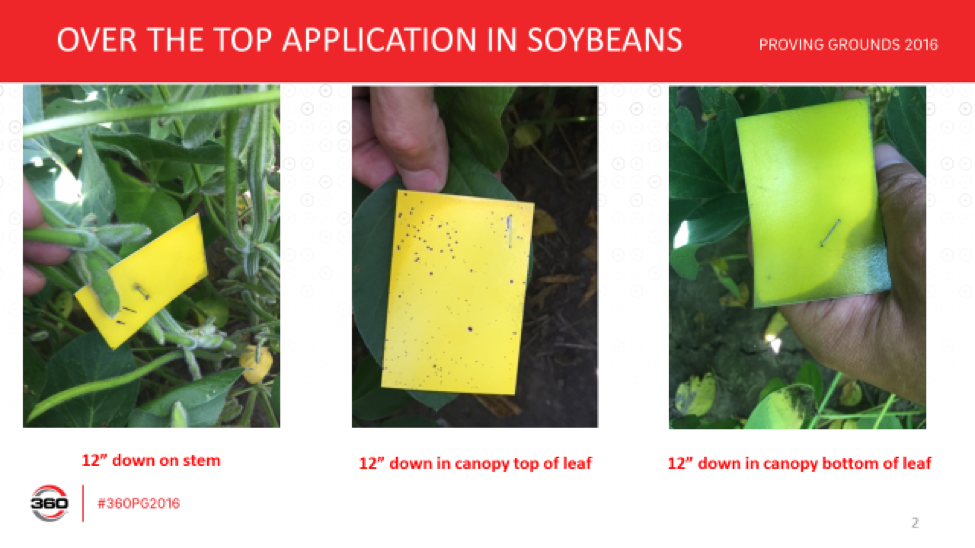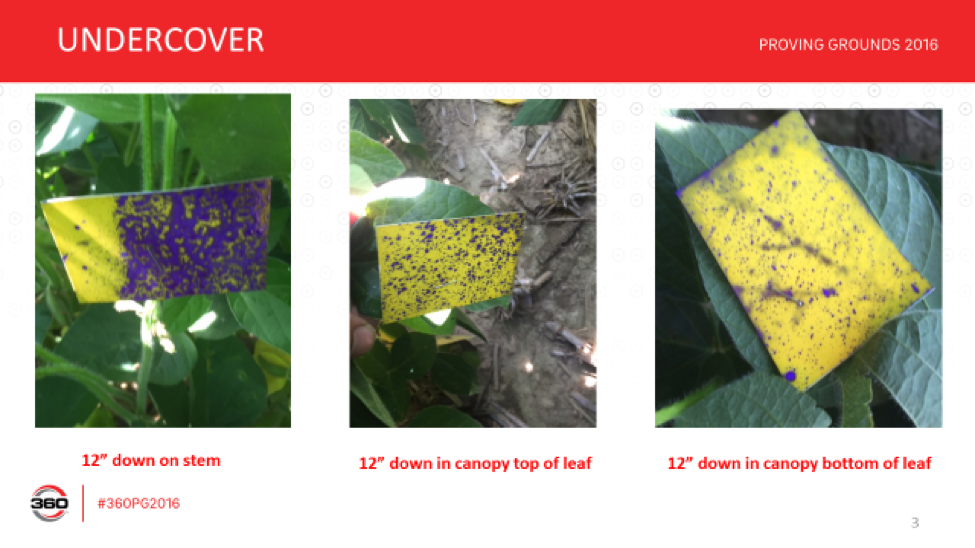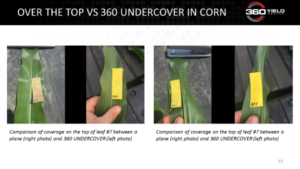A few interesting developments have occurred over the past 12 months that are changing the way we manage particular issues in the Midwest. An open letter from several university entomology departments in the Great Lakes region discusses concerns regarding the Cry1F protein (Herculex 1, TC1507) as it relates to control of the Western Bean Cutworm. For those growers utilizing a trait package that includes the Cry1F protein, diligent scouting for egg masses and larval hatch will be required to help control this insect, even on traited hybrids. Once detected proper control measures will be necessary. Utilizing technology like 360 UNDERCOVER to help drive placement of control products down into the canopy and on both sides of the leaf may be helpful in controlling this damaging pest as it moves down to the ear post-hatch.
Another change in many areas is the movement to non-traited hybrids in an attempt to capture premiums. Many growers likely felt that an isolated conventional field in a sea of treated corn would not be subjected to heavy infestations, but in many cases those growers have been surprised to learn that not only did egg-laying moths find those fields but they also witnessed the damage that heavy infestations can cause.
Admittedly it is hard to remember prior to the advent of Bt hybrids how much damage a heavy infestation of ECB can cause but where conventional hybrids are planted proper and diligent scouting is a must as yield loss can be heavy. Where infestations are found proper care must be taken to protect the yield potential in those fields.
This year in parts of the south a pest called the Sugar Cane Aphid continued to emerge as a primary problem for sorghum growers. Unfortunately the aphid populations can build quickly down deep in the canopy and on the underneath side of the leaf. Given the opportunity to place the product on the underneath side of the leaf deeper in the canopy seemed to be a benefit for growers fighting this pest.
Late season disease infections in both corn and soybeans were heavy in some areas. For many growers it seemed as though the timing was late enough so as to not warrant treatment and in some cases that was correct but in others growers have been surprised at the responses they are witnessing to fungicide applications. Utilizing technology such as 360 UNDERCOVER allows growers to place these products deeper in the canopy on both sides of the leaf and it allows them to utilize higher rates of liquid which helps improve coverage. See the slides that were taken in both corn and soybean fields that demonstrate the improved coverage.



As our practices change and as the technologies we utilize change it is important for growers to stay diligent as they fight to protect their yield potential. One way to accomplish this feat is to remain vigilant and to adopt new technologies that can provide a counter punch to the observed changes. In many fields this year 360 UNDERCOVER may have provided the exact counter punch required. Keep your eyes open for data regarding the benefits of this technology and where necessary consider adopting in order to manage these new issues.